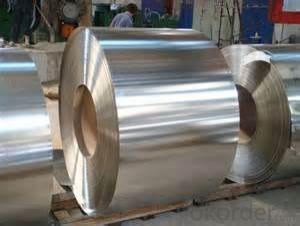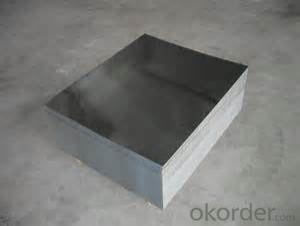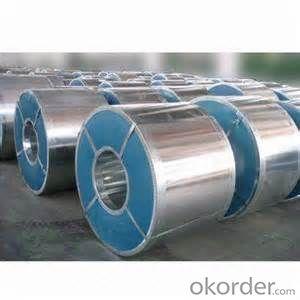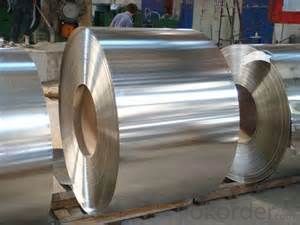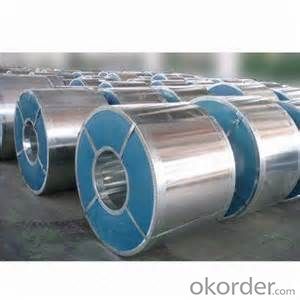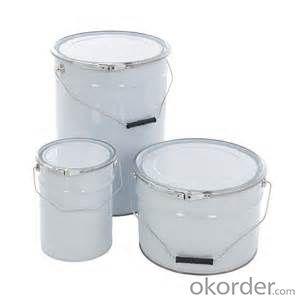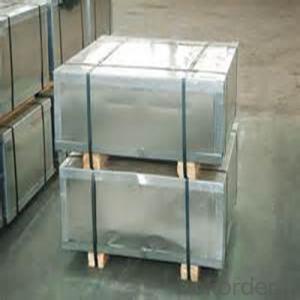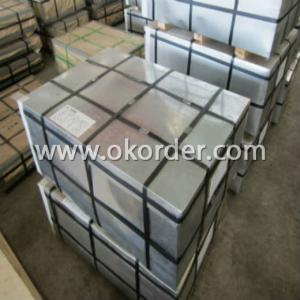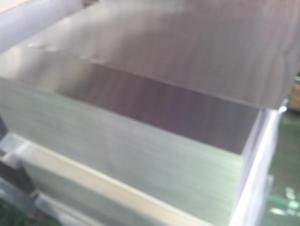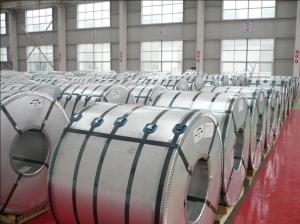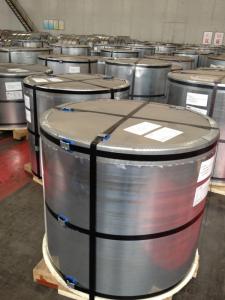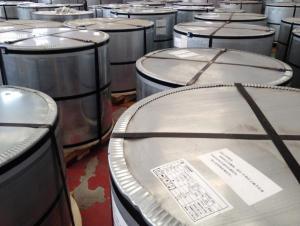High Quality of Tinplate for Paint Containers
- Loading Port:
- China Main Port
- Payment Terms:
- TT OR LC
- Min Order Qty:
- -
- Supply Capability:
- -
OKorder Service Pledge
OKorder Financial Service
You Might Also Like
Our tin plate (TP) products are made by coating tin using electrolysis on the surface of thin coldrolled steel sheet (black plates), with a thickness of 0.14~0.6 mm. Its shiny surface finish, superb corrosion resistance and formability make tin plates an ideal choice for the food industry and industrial parts producers. Our tin free steel sheet (ECCS) is widely accepted as a more economical substitute for the tin coated steel. Our TP/TFS products are widely used in the production of 3-piece and 2piece (D&I, DRD) cans as well as can lids and bottoms. Our products serve a variety of purposes, including material for steel EOE, toys, and electronic parts.
Our Tinplates Specification:
Standard: ISO 11949 -1995, GB/T2520-2000,JIS G3303,ASTM A623, BS EN 10202
Material: MR,SPCC
Thickness:0.15mm - 0.50mm
Width: 600mm -1150mm
Temper: T1-T5
Annealing: BA & CA
Coil Inner Diameter: 508mm
Weight: 6-10 tons/coil 1~1.7 tons/sheets bundle
Passivation:311
Oil: DOS
Surface: Finish,bright,stone,matte,silver
Packing:
1、For sheets: plastic or waterproof paper, metallic cover and angles, steel strips,wooden pallet.
2、For Coils: plastic or waterproof paper,plastic protect plate,steel strips.
Both Prime and Second Quality Are Available!!!
- Q: What are the different types of tinplate?
- There are several different types of tinplate, including single reduced (SR), double reduced (DR), and electrolytic tinplate (ETP).
- Q: Can tinplate be used for medical packaging?
- Yes, tinplate can be used for medical packaging. Tinplate is a durable and corrosion-resistant material that provides excellent protection for medical products. It is commonly used for packaging pharmaceuticals, medical devices, and other healthcare products.
- Q: How does tinplate perform in terms of impact resistance?
- Tinplate demonstrates good impact resistance due to its inherent strength and durability. It can withstand moderate impact without denting or deforming easily, making it suitable for various packaging and industrial applications.
- Q: How to quickly distinguish tinplate and ordinary substrate iron?
- Tinplate is tin coil, measurement of tin content?. The base plate is a plain hard rolled coil, which is relatively hard without annealing.
- Q: How does tinplate perform in terms of corrosion resistance compared to other materials?
- Tinplate offers excellent corrosion resistance compared to many other materials, particularly when exposed to moisture or acidic environments. The tin coating acts as a protective barrier, preventing the underlying steel from corroding. This makes tinplate a preferred choice for packaging and other applications where corrosion protection is crucial.
- Q: What are the advantages of using tinplate for gift packaging?
- One of the advantages of using tinplate for gift packaging is its durability. Tinplate is a strong material that can withstand impact and protect the contents of the gift. Additionally, tinplate is resistant to corrosion, ensuring that the packaging remains intact and attractive even over time. Another advantage is its versatility - tinplate can be easily customized and decorated, allowing for endless design possibilities. Furthermore, tinplate is recyclable, making it an environmentally friendly choice for gift packaging.
- Q: How to prevent the corrosion of tinplate wall hydrogen sulfide blackening, expansion
- Coating anticorrosionThe regular in metal storage tank inner wall spraying anti-corrosion coating, such as epoxy resin or lacquer layers.Spraying antirust paint on the pipeline and oil pump which are exposed to the atmosphere in a certain period.Setting up oil pipelines on the surface of the ground, to remove stagnant water and prevent soaking, so as not to peel off the coating.The movable metal parts in the oil tank equipment, such as the valves of the pipeline, should be coated with antirust grease or grease to prevent moisture from entering through the valve screw and causing corrosion. Outdoor doors should be equipped with protective covers to prevent rainwater from washing off the rust proof layer.The terminal is often set in the pipeline and equipment should be sprayed on the wet, corrosion or rust proof grease grease for protection of good standing.
- Q: How is tinplate stored and transported?
- Tinplate is typically stored in a dry and well-ventilated area to prevent corrosion. It is often stacked on pallets or stored in racks to ensure easy access and minimize the risk of damage. When it comes to transportation, tinplate is commonly transported in containers or on trucks. It is important to handle it with care to avoid any scratching or denting, which could compromise its integrity. Additionally, proper packaging and securing methods are employed to prevent movement or shifting during transportation, reducing the chances of damage.
- Q: How does tinplate packaging contribute to product protection against UV rays?
- Tinplate packaging helps to protect products against UV rays by acting as a barrier, preventing the penetration of harmful ultraviolet light. The reflective properties of tinplate also minimize the absorption of UV radiation, further safeguarding the product from potential damage caused by exposure to sunlight.
- Q: What are the advantages of using tinplate for HVAC components?
- There are several advantages to using tinplate for HVAC components. Firstly, tinplate is highly resistant to corrosion, making it suitable for applications in humid environments or those involving exposure to moisture. Secondly, tinplate offers excellent heat resistance, ensuring the durability and longevity of HVAC components even under high temperatures. Additionally, tinplate is lightweight, making it easier to handle and install, while still maintaining its strength and structural integrity. Lastly, tinplate is a cost-effective option, providing a balance between performance and affordability for HVAC systems.
Send your message to us
High Quality of Tinplate for Paint Containers
- Loading Port:
- China Main Port
- Payment Terms:
- TT OR LC
- Min Order Qty:
- -
- Supply Capability:
- -
OKorder Service Pledge
OKorder Financial Service
Similar products
Hot products
Hot Searches
Related keywords
